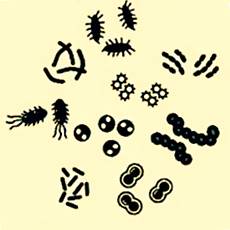Obesogens: chemicals that make you put on weight
Chemicals and Obesity
Fact Checked
×All the content published in our website is fact checked to validate its accuracy.
Visit our guidelines web page to learn more about our strict processes regarding how we review our content's sources: reliable and reputable journals, media websites, universities, colleges, organizations, and professionals.
Our articles are based on scientific evidence, and the references are included in its footnotes, which are clickable links to sound scientific papers.
First published: 08. Dec.2024
Overview: The chemicals that make us fat
Obesogens are chemical compounds, mostly Endocrine-disrupting chemicals (EDCs), that act upon the body's metabolism, altering the way hormones work, and increasing the quantity, growth, and mass of fat cells. This causes an exaggerated weight gain.
These chemicals also cause epigenetic changes affecting how genes express themselves and can be passed on to the next generation.
There are over 50 obesogenic compounds, and they are found in plastics, food, packaging, cosmetics, detergents, and clothes. You are exposed to them by either eating them, touching them, or inhaling them.
References and Further Reading
(1) Lobstein, Tim, (2024). Environmental chemical obesogens, what can we do?. The Lancet Diabetes & Endocrinology, Volume 12, Issue 5, p302-303. May 2024
(2) Sigal A. Willner, Bruce Blumberg, (2019). Endocrine Disruptors and Obesity. Eds: Ilpo Huhtaniemi, Luciano Martini, Encyclopedia of Endocrine Diseases (2nd Ed.), Academic Press, p776-786, ISBN 9780128122006, https://doi.org/10.1016/B978-0-12-801238-3.65207-8
(3) Amato AA, Wheeler HB, Blumberg B., (2021). Obesity and endocrine-disrupting chemicals. Endocr Connect. 2021 Feb;10(2):R87-R105. doi: 10.1530/EC-20-0578. PMID: 33449914
(4) Green AJ, Hoyo C, Mattingly CJ, Luo Y, Tzeng JY, Murphy SK, Buchwalter DB, Planchart A., (2018). Cadmium exposure increases the risk of juvenile obesity: a human and zebrafish comparative study. Int J Obes (Lond). 2018 Jul;42(7):1285-1295. doi: 10.1038/s41366-018-0036-y. Epub 2018 Feb 20. PMID: 29511319
(5) Ceja-Galicia ZA, Daniel A, Salazar AM, Panico P, Ostrosky-Wegman P, Diaz-Villaseñor A., (2020). Effects of arsenic on adipocyte metabolism: Is arsenic an obesogen? .Mol Cell Endocrinol. 2017 Sep 5;452:25-32. doi: 10.1016/j.mce.2017.05.008. Epub 2017 May 8. PMID: 28495457
(6) European Commission, (2022). Science for Environment Policy. European Commission DG Environment News Alert Service, edited by the Science Communication Unit, The University of the West of England, Bristol
(7) Fernando Guerrero-Meza, Paulina Vega-Morales, Vianey Rubio, Hayde Vergara-Casta&ntile;eda, and Ana Sanchez-Tusie. (2022). Endocrine Disruptors as Enviromental Obesogens: Effects on Key Adipogenic Proteins. European Scientific Journal, ESJ ISSN: 1857-7881 (Print) e - ISSN 1857-7431 August 2022 edition Vol.18, No.27
(8) Hales CM, Carroll MD, Fryar CD, Ogden CL., (2017). Prevalence of Obesity Among Adults and Youth: United States, 2015-2016. NCHS Data Brief. 2017 Oct;(288):1-8. PMID: 29155689
(9) National Institute of Environmental Health Sciences. Endocrine Disruptors. Accessed 07.Dec.2024
(10) Yinan Zhang, Bingyi Wang, Wenhui Sun, Guanghui Wang, Zhiquan Liu, Xiaofang Zhang, Jiafeng Ding, Yu Han, Hangjun Zhang, (2024). Paternal exposures to endocrine-disrupting chemicals induce intergenerational epigenetic influences on offspring: A review. Environment International, Vol 187, 108689, ISSN 0160-4120, https://doi.org/10.1016/j.envint.2024.108689
About this Article
Obesogens: chemicals that make you put on weight, A. Whittall
©2024 Fit-and-Well.com. First Published: 08.Dec.2024. Update scheduled for 08.Dec.2027. https://www.fit-and-well.com/diet-food/obesogens.html
Tags: obesogen, chemicals, weight loss, genetics, obesity, Endocrine-disrupting chemical (EDC), Developmental Origins of Health and Disease (DOHaD)



